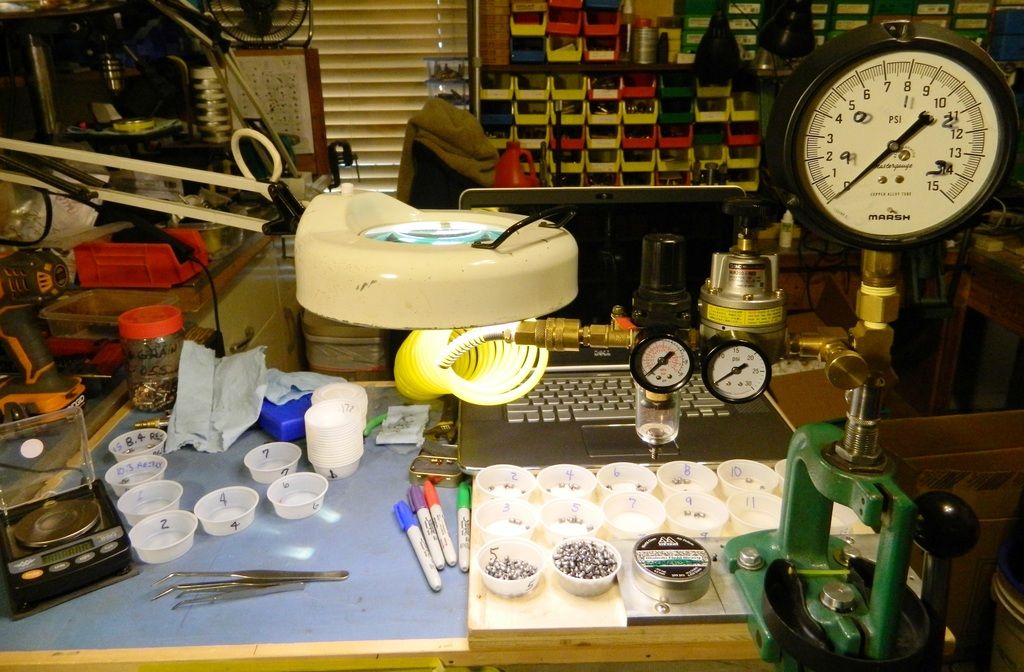You are correct in assuming that pellets are not round. I have spent a lot of time with a laser micrometer and a 100x optical comparator measuring pellets. The most round pellets are maybe .0005" difference from largest area to smallest......and those are pretty rare.
Pellet head size is only one of many variables that may or may not make a pellet shoot well. I have 2 different lots (good shooting) of JSB 8.44's that shoot the same average scores over time indoors from the same setup and barrel. One lot has a rather large head (4.53+), and the other has a very small head (4.49-4.50). That pretty much throws out the idea that pellet head size is the determining factor for good shooting pellets.
I have also sorted pellets from the same lot into 3 categories from smallest to largest. I shot 10-12 cards with each category and could not detect any measurable difference. I also combined the largest with the smallest and could see no difference over time. For me, this dispelled the theory that removing the largest and smallest pellets from the mean group size will improve performance.
I have also made sizing dies of all types and never saw any improvement overall. If you look at a pellet that has been sized under a microscope.....it's ugly. It may be more round at the apex of the head.....but the big vertical flat wall section you made to coax it into a rounder shape does not scream performance. Testing backs up that impression.
Skirt diameters, skirt thicknesses, skirt angles, head dome radius, skirt cavity shape, pellet length, concentricity, and many more (along with head diameter) make up the differences from lot to lot. To point the finger at only one of these variables and deem it wholly responsible for accuracy does not make much sense to me.
The best thing you can do is find an indoor place to shoot, and begin doing your own testing in the most methodical manner you can. Don't do things like clean the barrel and shoot 3 different lots and sizes through. Clean the barrel in the same manner every time you change something. Barrel cleanliness (or dirtiness) or differing stages along the way will skew your interpretation of the results. I clean the barrel before every card, and am always surprised to hear that some get 100's of accurate shots between cleanings. H&N pellets are more tolerant of this.....but for AA and JSB with regular rifling barrels......accuracy degrades pretty quickly for me (35-40 shots max).
It is a very time consuming process to systematically evaluate anything. Most people (from what I have seen) are no where near patient enough to do it right, and they end up drawing false conclusions from their flawed tests. Those false conclusions, then, influence their thoughts about everything else that follows. You can see how that quickly turns into a slippery slope.
Mike



